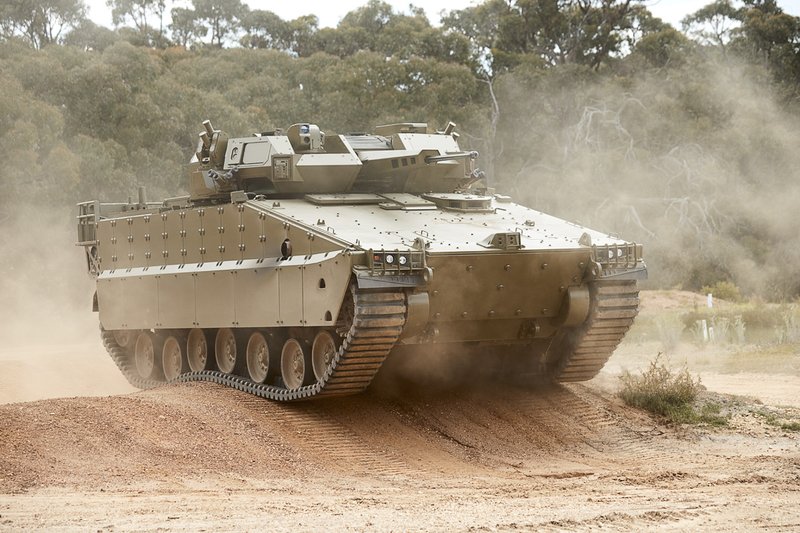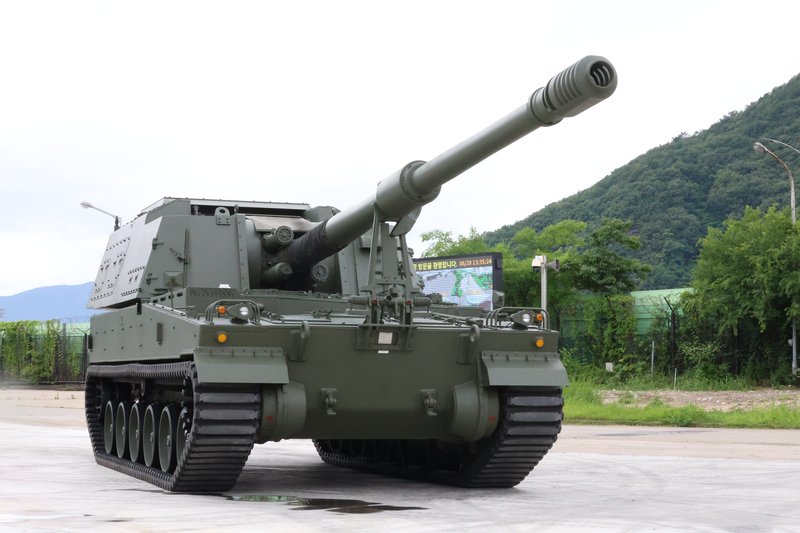Could rubber tracks be the answer to Ajax’s vibration problems?
The introduction of the Ajax family of tracked AFVs into the British Army, with development starting as far back as July 2010, has been delayed by a number of factors, including vibration.
The hard fact is that despite the spotlight being shone on GDLS UK and criticism of its design, all tracked AFVs have these problems. I remember driving one infantry fighting vehicle (IFV), which shall remain nameless, with low vibration until I reached a speed of around 30km/h when the ride became uncomfortable, but on reaching 40km/h things returned to normal... Continues below
Newsletter Sponsors:

Above: The Hanwha Redback IFV fitted with Soucy International’s CRT has been selected by Australia. Could rubber tracks also mitigate the UK Ajax programme’s vibration problems? (Photo: Hanwha)
In the last few years, demand for heavier weight classes of composite rubber tracks (CRT) have meant that both customers and principal supplier Soucy International have invested considerable sums of money into the development of this technology.
I have witnessed this work maturing over the last ten years for applications from 35 to 55t, so it does mean CRT could be offered as a spiral upgrade for the Ajax family in the future, aiding system performance and crew comfort, saving weight and improving running costs.

According to Soucy International the potential weight saving on tracks can be up to 50%, with 70% less vibration and up to 13.5dB noise reduction. In addition, CRT have less rolling resistance, which when fitted to a Warrior IFV would give up to 23% increase in range.
Soucy’s recent US studies claim $20 per mile savings and up to 15 times less maintenance than conventional steel tracks.
Having driven over 60 AFVs, tracked and wheeled, the BAE Systems CV90 Armadillo was the best tracked ride as it was fitted with CRT.
These are now standard on all of Norwegian Army CV9030 variants as well as its M113s and more recently have been fitted to the upgraded CV9035NL MLU for the Royal Netherlands Army.
They are also standard on current production BAE Systems Hagglunds BvS 10 and ST Engineering Bronco ATVs and will be fitted to the South Korean Redback IFV recently selected by Australia to meet its Land 400 Phase 3 requirement to replace its upgraded M113 series of armoured personnel carriers.

Soucy’s CRT are being selected for an increasing number of emerging AFV programmes including by both contractors (General Dynamics Land Systems and American Rheinmetall Vehicles) recently awarded contracts for the XM30 Optionally Manned Fighting Vehicle (OMFV), the long-term replacement for the M2 Bradley IFV currently deployed by the US Army.

Above: Hanwha’s K9A2 Thunder 155mm/52cal self-propelled artillery system also comes fitted with Soucy CRT. (Photo: Hanwha)
CRT are also installed on the Hanwha K9A2 155mm/52cal self-propelled artillery system being offered by Team Thunder to meet the UK Mobile Fires Platform (MFP) requirement to replace the AS90s currently deployed by the Royal Artillery in declining numbers.
They have also been tested on other platforms including the Rheinmetall KF-41 Lynx IFV.
In addition to being installed on newbuild tracked platforms they can also be retrofitted to existing AFVs as a replacement for conventional steel tracks, with changes typically limited to a new front drive sprocket size and a modified rear idler.
It is my opinion that while some users see the benefits of CRT and may have a longer-term use for them, many have some years of conventional steel track stocks to use first or have contractual ties which obligate the use of local steel track suppliers.
Otherwise, it makes no sense to use a track that does more harm than its alternative, costs more through-life and underperforms in all areas.
Don't want to miss out on future Decisive Edge content? Make sure you are signed up to our email newsletters.












